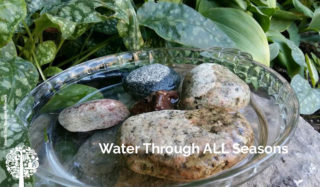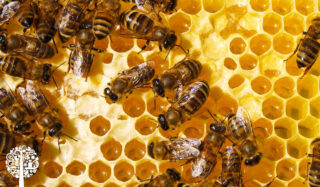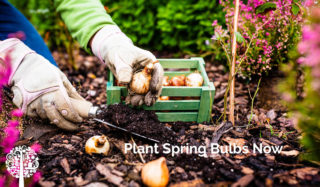Things You Can Do Throughout The Seasons To Keep Bee Hives Buzzing
We are well into autumn, and much of the wildlife in the Northern hemisphere is getting sleepy. The metabolism of hedgehogs and dormice slows as they get ready to hibernate. Insects and invertebrates are entering a state of suspended animation, finding shelter in our homes and yards. Just like mammals, their temperature drops while their heart rate slows. The world gets ready to go to bed.
Helping Bees In The Cold
The mighty bee is different! A cold-blooded creature, the hive must maintain a warm temperature to keep the colony alive. They accomplish this through clustering, forming a constant moving ball around the queen bee so she is protected for the winter.
To survive the cold, they need nourishment from the food they collect and store throughout the warmer months. Nectar gives them energy, and pollen provides protein and other nutrients. So when humans benefit from a fall honey harvest, beekeepers judge how much to leave in their hives to guarantee the bees’ survival; this is something I’ve come to understand working in a community garden in Northern England with an apiary containing eight beehives.
Fall And Winter Plants
In the spring and summer months, plenty of flowers offer nectar and pollen in gardens, roadsides, and meadows. But in the fall, gardens die back, and nature runs its course. If we’re not careful, there can be very little to sustain our brilliant, buzzy friends.
Anything that flowers between September and March will help the bees and pollinators. Hellebores, willows that produce catkins, snowdrops, and aconites give splashes of winter color and food for bees. Late flowering sedums and ivy provide nectar well into November. In milder climates, nasturtiums may still have bright orange and yellow blooms closer to Halloween.
Plant Spring Bulbs Now
Plant spring flowering bulbs in the fall and early winter to ensure a good supply of pollen for the queen bees who will emerge next spring. Spring blooming crocus, alliums, and grape hyacinths are all excellent options. Also, plant winter violas and pansies before the earth gets too cold; you and the bees can enjoy them for months.
Flower Heights
Mix up the heights of flowering plants in the garden to allow pollinators more choices. For example, bees love gallant foxgloves, large-headed poppies, and bell-shaped flowers. Nasturtiums at ground level, borage, and comfrey are all friends to the garden and its flying insects. When left to flower, scented herbs like lavender and mint will also attract pollinators.
Water Through ALL Seasons
Bees can’t store water in the hive, so be sure to offer an outside source. If ponds and water sources have frozen, place trays of water around the garden, checking them regularly.
Put in a layer of pebbles, twigs, and leaves to give the bees something to climb on to prevent drowning. Provide water for the bees in the summer for drinking, cool the temperature, and control the humidity of the hive.

Nursing bees also need water to produce the jelly they feed the larvae. In addition, water helps thin the honey stored within the hive’s frames, which can become viscous or crystallized with changes in temperature (like a jar of honey does).
Small pools amongst rock gardens or spaces where puddles can form will give the bees easy drinking holes. Moss-covered rocks and stone walls are also great.
Bees are happy to drink stagnant, muddy water. Scientific evidence points to bees finding water by its smell. Therefore, bees are more likely to be attracted to smelly water than clear water fresh from the tap. Once they find a water source, bees will return to it again and again, regardless of the smell.
How To Stop Varroa Mites
Thyme, savory, rosemary, marjoram, and lavender are all believed to help deter the nasty varroa mite. The Varroa mite reproduces in a honey bee colony. It attaches to the bee’s body and weakens it by sucking fat.
If you have a garden within the vicinity of a honey bee colony, consider planting thyme and spearmint and laying rhubarb leaves near the hives to help keep this vicious predator at bay.
No Pesticides!
Chemicals in the garden are a huge no-no if we want to encourage pollinators. However, after years of declining bee numbers, we seem to be on a healthier trajectory as people learn to leave ‘wild’ areas in their gardens.
Yes To Weeds
Let ‘weeds’ flower; after all, that’s what they are – wildflowers. When mowing or cutting back grassy areas, leave a patch to grow long and wild for bumblebees to nest in. And don’t get rid of dandelions! Dandelions are the first food for the bees come early spring.
The Bee’s Knees

Bees, like all pollinators, are vital to the existence and survival of our planet. They play an integral role in our biodiversity. According to the World Wildlife Fund, almost 90% of wild plants and 75% of leading global crops depend on animal pollination. One in every three mouthfuls of our food depends on pollinators such as bees.
Lending a helping hand to our bees is one of the small yet crucial steps we can take to secure the future of our planet.






